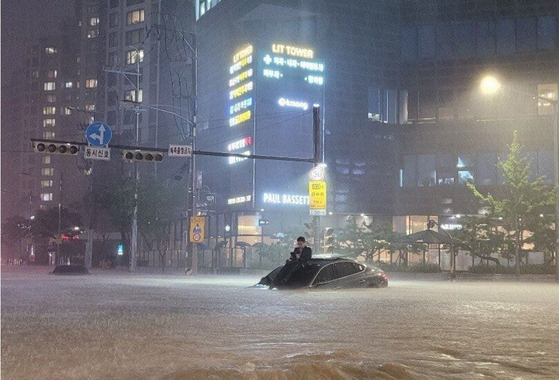South Korea’s Flood Crisis Sparks Grave Risks to Physical and Mental H…
페이지 정보

본문

Hello everyone,
South Korea’s torrential rains from July 16–20, 2025 triggered widespread flooding and landslides that claimed at least 17 lives, left 11 missing, and displaced over 13,000 people across regions such as Gapyeong, Sancheong, and Gwangju. As residents grapple with the aftermath, officials and health experts warn of profound impacts on physical and mental well‑being both immediate and lingering.
Physically, survivors face a range of acute dangers. Floodwaters and debris led to injuries including bruises, fractures, hypothermia, and near‑drownings, especially during sudden landslides and collapses in Sancheong and Gapyeong. Research following previous floods such as the record 2022 Seoul inundation showed significant rises in emergency visits for external injuries, including elbow, ankle, and foot trauma, alongside worsening of chronic respiratory disease symptoms in severely flooded districts. Disrupted hospitals, power outages, and damaged infrastructure have hampered access to treatments, worsening the management of chronic conditions like asthma, diabetes, and hypertension.
Waterborne and vector‑borne illnesses are also a major physical health risk. While no dramatic spike in infectious disease was detected after the 2022 Seoul floods, inadequate sanitation, contaminated water, and interrupted immunization or vector control can elevate risks of gastrointestinal infections and skin or respiratory diseases especially among people aged 15 to 64. These threats are exacerbated by limited access to clean water and medical care during and after flooding.
Mentally, the floods have triggered intense psychological distress across affected communities. National studies show that those who experience loss of life, assets, or homes during disasters are at much higher risk of depression, anxiety, and post‑traumatic stress disorder (PTSD). In South Korea, severity of disaster correlates strongly with elevated scores on PHQ‑9, GAD‑7, and PTSD scales with particularly vulnerable populations being elderly individuals, women, low‑income families, and those with lower educational levels. As many survivors describe losing livelihoods, enduring evacuation, and living with uncertainty, feelings of helplessness and grief mount.
Cultural and systemic barriers amplify these mental health impacts. In Korea, mental illness remains heavily stigmatized fewer than 15% of sufferers receive professional treatment even though over two million people experience depression annually. In disaster situations, government relief tends to focus on immediate physical needs rather than psychological support. Survivors often rely on family or informal means, and many avoid seeking help due to social stigma or lack of accessible services compounding long‑term distress.
To mitigate both physical and mental health fallout, experts stress the importance of integrated disaster planning. Studies advocate for professionalized mental health services embedded in disaster response going beyond food and shelter distribution to include counseling, trauma support, and long‑term follow‑up care. Strengthening community resilience and trust in government relief programs has also been linked to better quality of life among disaster survivors in Korea. Targeted outreach to vulnerable groups especially the elderly, low‑income, and socially isolated is essential.
- PrevStory about Penicillin: breaking the mould 25.07.30
- NextHeat Waves Sweep Across South Korea: Rising Risks and Rising Responses 25.07.20
댓글목록
There are no registered comments.
